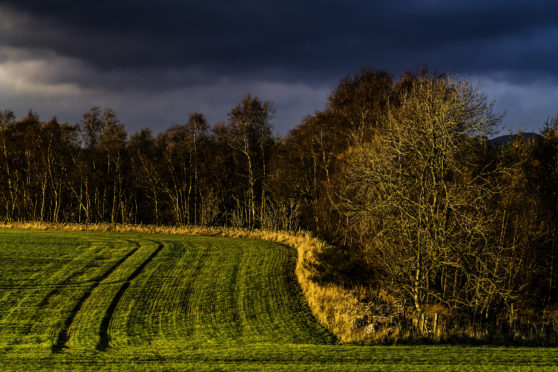Newly-published guidance about tree planting on tenanted land appears to have done little to mitigate tenant farmers’ suspicion of forestry.
The guidance, published by Scotland’s Tenant Farming Commissioner, Bob McIntosh, outlines the rights of landlords and tenants who might be considering diversifying into forestry creation at a time of financial uncertainty and when woodland growth is being actively encouraged by the Scottish Government.
However, while the Scottish Tenant Farmers’ Association (STFA) commended the advice for outlining the rights of both tenants and landlords, it pointed out that despite government incentives and tenants’ legal right to diversify since 2003, there were very few examples of tenants planting trees, other than small shelter belts and amenity planting.
STFA chairman Christopher Nicholson said: “This is partly due to an unwillingness to convert land from agriculture to forestry, the perceived difficulties of obtaining landlord consent and the inherent risks of having to pay end of tenancy compensation to the landlord if the tree planting is seen as devaluing the land.”
The guide gives examples of scenarios where tenants and landlords might see tree planting on holdings as valuable, and Mr McIntosh makes it clear that a tenant of a secure tenancy or a limited duration tenancy who wants to use the land for a non-agricultural purpose such as tree planting can do so, provided they obtain written consent for the activity.
Mr Nicholson warned that the guide should not be seen as giving a green light to landlords to resume land for forestry and insisted any resumption of land or deals to plant trees should be done with the agreement of the tenant and local community.
“Landlords may have the right to resume land for non-agricultural purposes, but tenants also have statutory rights and are entitled to resist resumption, where it could be seen to be a “fraud on the lease”, or contrary to the good faith of the original lease,” he added.
Rural Economy Secretary Fergus Ewing welcomed the document and said he hoped it would help in the drive to expand woodland in Scotland.
“Tenant farmers can gain many benefits from new tree planting on their holdings, especially as it can help to improve their business and diversify their income,” he said.
“This simple and clear guide helps to lay out for both landowners and tenants how new woodlands could work for them and the benefits that can potentially be realised by all parties.”
The Guide to Tree Planting on Tenanted Agricultural Holdings is available at
landcommission.gov.scot/tenant-farming/codes-of-practice/
nnicolson@thecourier.co.uk










